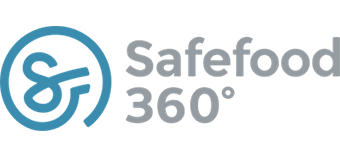May – Food Safety Industry Moments You Might Have Missed
May 2019 had significant news from FDA, USDA, the World Health Organization, the EU Commission, Food Standards Australia New Zealand, future protein global demand and African Swine Fever.
Each of these stories are highlighted in the latest Safefood 360° industry round-up. This video is supported with a full transcript and sources for more detailed reading.
WHO to Help Countries Estimate Foodborne Diseases
Last month, the WHO announced it will help countries estimate respective foodborne disease burdens by providing a tool to calculate their expected national estimates.
This new tool is expected to be available later this year.
FDA’s Era of Smarter Food Safety
At the tail end of last month, the FDA announced a new smarter era of food safety that will combine the implementation of FSMA with the agency’s use of new and emerging technologies.
This era starts with the development of a “blueprint” which addresses food traceability, digital technologies and evolving food business models.
IPBES Global Assessment Report
An IPBES Global Assessment Report has identified changes in land and sea use are the most significant direct driver of changes in nature and have meant that 1 million plant and animal species are threatened with extinction.
In fiscal terms, this means US$577 billion in annual global crops are at risk from pollinator loss.
EU Commission to Amend Plastic Food Contact Material Regulation
The EU notified the WHO earlier this month of proposed amendments to the regulation on plastic food contact materials to reflect the authorization of new substance poly((R)-3 -hydroxybutyrate -co-(R)-3-hydroxyhexanoate).
This amendment will modify Annex 1 of the Regulation and was triggered by a positive opinion by the European Food Safety Authority earlier this January.
Plastic materials and articles not in compliance with the new rules will not be able to be placed on the EU market 12 months after the regulation is enforced.
This is currently open to a WTO commenting period and if successful, is envisioned to be to be adopted in September.
FSANZ Reviewing Food Standards Code
Food Standards Australia and New Zealand announced that it is reviewing chapters 3 and 4 of the Food Standards Code to ensure an up-to-date approach to food safety management in both nations.
The decision follows increased foodborne illnesses in the countries and will focus on new technologies, food safety management in food service and retail, and standards for high-risk horticulture products to manage food safety on-farm.
Canada to Enforce Penalties and Fines for Food Safety Violations
The Canadian Food Inspection Agency announced Administrative Monetary Policies can now be issued for violations by food businesses that violate food safety and market access for Canadian goods.
The new penalties equip the CFIA with a consistent set of tools it can use in enforcing compliance with legislation.
Asia to be 50% of Global Protein Market by 2025
A recent report commissioned by Food Innovation Australia Limited predicts that that China and India will account for almost 50% of global protein demand by 2025.
Specifically, it predicts that China will constitute 31% of global demand, whereas India will account for 16%.
Although rising population rates are the main attributing factors, the report also claimed that a growing rate of middle class consumers, technology, and urbanization may become the main driving forces in the years to come.
USDA steps up Swine Fever Tactics
USDA announced the roll out of a surveillance plan to combat against African Swine Fever affecting its borders.
African Swine Fever will now be tested for in addition to the existing classical swine fever surveillance already in place.
The plan is being implemented alongside current efforts which involve US Customs and Border Protection, enhanced security measures and collaboration with states, industry and producers to ensure everyone remains aware of on-farm best practices and biosecurity protocols.
US Beef Exports
Current tariffs may mean the US is not benefiting properly, as African Swine Fever continues to impact China, consumers are switching from pork to beef.
The US Meat Export Federation claims US beef exports dropped 3% year on year in volume and 0.8% in volume.
Meanwhile, Australian beef which is subject to a lower tariff rate surged to a 77% volume increase year-on-year for Q1, 2019.
Japan has also lifted its age limit on imported beef, which could be worth $200m in extra revenue to the US economy.
Learn more: US & Australian beef figures
Read more: Japan lifts age limit on US beef
FDA Extends Application Deadline for VQIP
In the US, the FDA announced the application period for importers to submit their notice of intent to participate in the Voluntary Qualified Importer Program has been extended to July 31st.
The VQIP is a fee-based program which provides expedited review of human and animal foods imported into the US.
FDA Permits Potassium Chloride Salt for Food Labels
The FDA also moved to allow potassium chloride to be labelled as Potassium Chloride salt on labels.
The change has come amidst scrutiny from the Center for Science in the Public Interest and others to have it labelled simply as Potassium Salt.
The conversation continues as the draft guidance has moved to a 60-day comment period.
Conclusion
That is your monthly Industry round up and thank you for watching. If you would like to know more about how food businesses globally use Safefood 360° to meet their compliance and quality demands, please send me a message, comment or visit Safefood360.com for more information.






Leave a Reply
Want to join the discussion?Feel free to contribute!